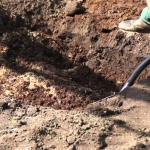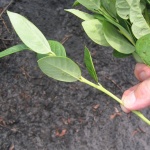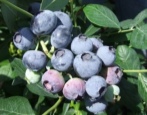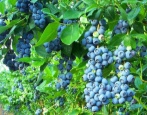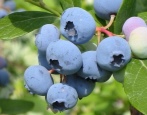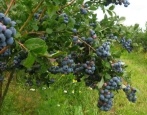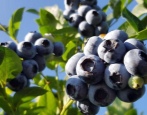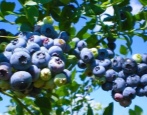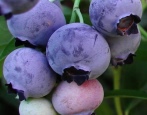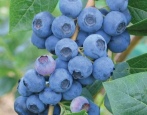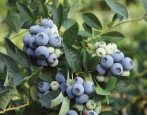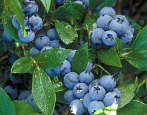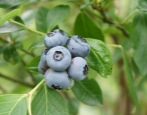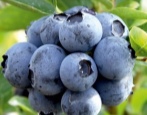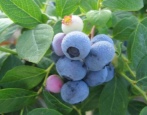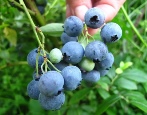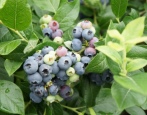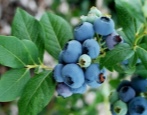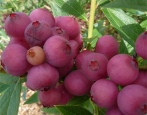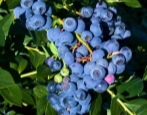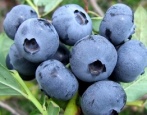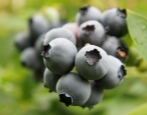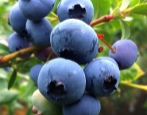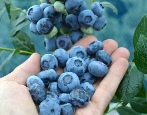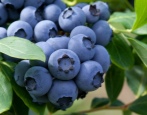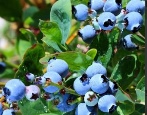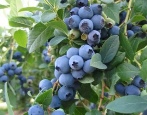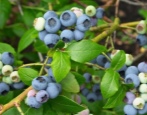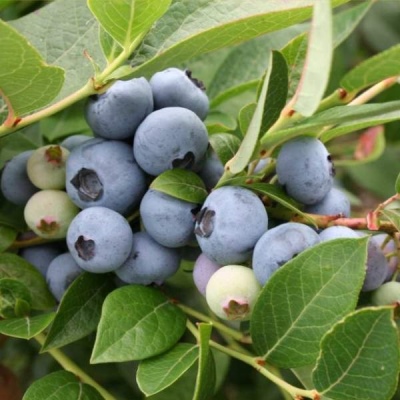
- Ripening terms: late ripening
- Growth type: tall
- Bush height, m: 1,8-2
- Taste: sweet and sour
- Yield: high
- Average yield: 4-6 kg per bush
- Fruit size: large
- Fruit color: light, blue-blue
- Description of the bush: sprawling
- Transportability: good
Brigitta Blue is one of the most popular varieties of high-yielding garden blueberries in the central and southern regions of the country. Tall bushes begin to bear fruit as early as 4 years after planting, while bringing large yields of bright and tasty berries. Thanks to the efforts of breeders, blueberries of this variety are perfectly stored for a long time and are suitable for use not only in their original form, but also as raw materials for preserves and jams.
Description of the variety
Brigitta Blue is a late ripening, tall variety. By the fruiting period, the bush can reach 1.8 m in height. At the same time, it perfectly coexists with other representatives of blueberries. Begins to bear fruit actively 4 years after planting. Does not require complex maintenance, but is sensitive to the composition of the soil and the location of the bushes on the site.
Fruit characteristics
The bushes bear fruit in large berries reaching 15 mm in diameter. At the moment of full ripening, the fruits acquire a rich light blue color.
Taste qualities
The berries have a bright, rich, sweet and sour taste, typical of blueberries. Due to the peculiarities of the varieties, they are stored for a long time and are perfect for long-term transportation, while they do not lose their appearance and taste.
Ripening and fruiting
The variety is late ripening. Usually, all berries simultaneously acquire a characteristic shade of full ripeness. Depending on weather conditions and the time of the onset of spring, the crop can be harvested from mid to late August. In the most northern regions - in early autumn.
Yield
The variety has a high yield, which makes it suitable for large farms. The average yield from one bush per season is 4-6 kilograms of berries. With good groundbait and the correct location on the site, it is possible to get higher rates.
Growing regions
The plant is quite hardy, so it can grow and bear fruit in almost any climate. However, it is not recommended for the northern regions, since the berry is late. In areas with a short summer, it may simply not have time to ripen.
Self-fertility and the need for pollinators
Blueberries Brigitte Blue are self-fertile varieties and do not require additional efforts for the appearance of berries. However, the location of nearby bushes of other blueberry varieties, due to the action of pollinators, significantly increases the final yield of each bush.
Growing and care
Brigitta Blue is a tall variety that is especially demanding on heat and sun, so before planting it is worthwhile to outline the most suitable place for the bushes in advance. It is recommended to plant the plant in spring. During the summer period, it will have time to take root and get stronger enough to survive the winter without any problems.
1-2 months before planting, planting pits with a diameter of 50 cm and a depth of 40 cm are prepared, and they are allowed to stand. And only after that the bushes are planted, observing all the stages. Only correctly planted blueberries will be able to give a big harvest already for 4 years.
Plants require special care throughout the year. At a certain time, simple procedures are carried out that are easy to master, even with little experience in gardening.
From 2-4 years, autumn pruning is periodically carried out to form a bush and rejuvenate branches. In a warm period of time, regular, but not too intense watering and periodic feeding are necessary.

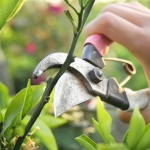
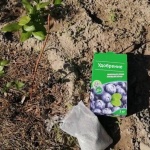
Disease and pest resistance
Brigitta Blue blueberry bushes are highly resistant to most diseases and pests. It is worth waiting for infection only if the soil is completely depleted and cannot provide the plant with the necessary nutrients. Constant moisture at the roots is also considered a dangerous factor.
Growing berries of this variety are faced with only two problems: May beetles and birds. Due to the attractive taste of berries, birds often fly to the bush in whole flocks to peck at the tender flesh. A shelter from a net will help protect the fruits.
May beetles can spoil the flowers and leaves of the plant, and their larvae often harm the root system. In order to avoid the problem, it is worth treating it every spring and additionally as a preventive measure in the fall.
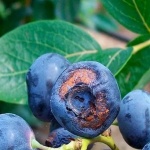
Winter hardiness and the need for shelter
Tall blueberries Brigitta Blue easily tolerate winter frosts down to -15 degrees, so in warm regions they do not need additional protection for the winter. In areas with a harsher climate, shelter must be created to preserve the bushes. The work is carried out after the autumn pruning with the onset of night frosts down to -10 degrees. Blueberry branches are pressed to the ground and covered with any covering material until the snow melts.

Location and soil requirements
The specific root system and growth characteristics of the tall Brigitta Blue variety require special conditions when choosing a place on the site. For abundant fruiting, it is necessary to place the plant on the sunny side; in the shade, the yield will significantly decrease. The soil must be sufficiently moisture-permeable and well-drained. Particular attention should be paid to acidity. Blueberries prefer acidic soils with a pH value of at least 3.5–5.
